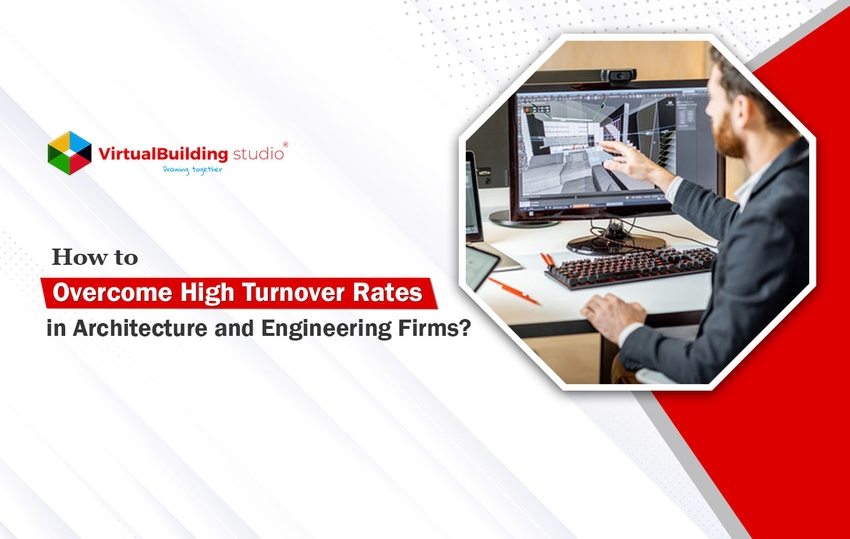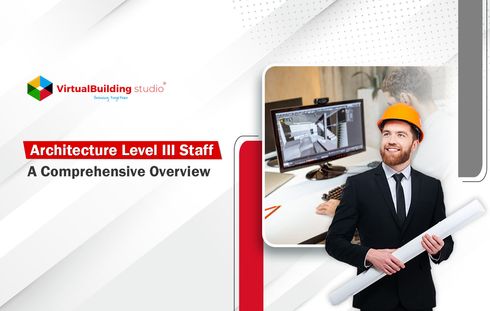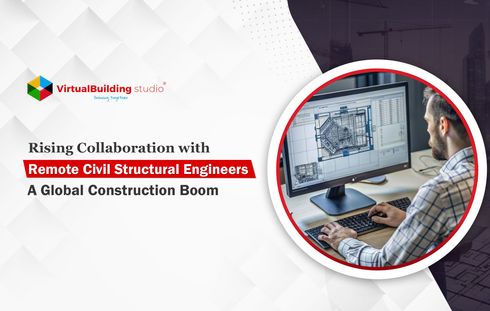
The AEC industry is experiencing a transformative shift in project inception amid execution. With the rise of the remote architect workforce, traditional workflows and in-person office environments are rapidly changing, into fluid formats.
Adjustments may be beneficial, and new opportunities may be exciting, but challenges such as high turnover rates are becoming an exigent issue.
For architects working remotely, keeping a workforce that is stable and engaged is paramount to prevent productivity loss, client dissatisfaction, and cultural dilution.
Evolution of Work Culture in the AEC Industry
The technological revolution and the global pandemic forced most industries to transform the hard work culture into work-life balance.
Remote work used to be uncommon, but has become a regular part of the evolving work culture, making remote architects and other professionals imperative to this field. As a result, companies have had to change their workflows and management styles to align with the new normal.
However, the transition to remote work is not spared and has its challenges. The early excitement surrounding flexible work arrangements converts into issues such as isolation, communication gaps, and remote work fatigue, over a long time.
The constraints have directly contributed to the industry's rising turnover rates, making it critical for businesses to develop solutions to reduce these risks.
According to a Harvard Business Review analysis, organizations that do not adjust their management techniques to remote labor would see greater attrition rates.
Adapting Traditional Workflows to Remote Settings: Overcoming the Hurdles
Adapting standard workflows to remote settings entails more than simply relocating physical chores to a digital platform; it also involves redesigning team relationships, developing meaningful connections, and ensuring that remote architect teams remain motivated and aligned with the firm's goals.
Traditional workflow encourages spontaneous conversation, rapid problem-solving, and social bonding, difficult to recreate digitally.
As the AEC industry moves toward flexible and hybrid work arrangements, leaders must face these problems head-on.
Without effective methods, the danger of high turnover rises as employees struggle to manage work and family life in a distant setting. Gartner's research shows that poor remote team management is one of the leading reasons employees seek new possibilities.
Decoding the Hidden Costs Behind High Turnover Rates
High turnover among remote architects has hidden financial and cultural costs that have extended far beyond the immediate hiring process.
These costs have often gone unnoticed until they have begun to affect the bottom line. The significant impacts of high turnover rates include the following:
Financial Losses
Replacing an architect or engineer involves direct costs such as recruitment fees, onboarding expenses, and training.
Additionally, the loss of a skilled employee leads to a decrease in productivity ultimately affecting the firm’s finances. According to a study by Gallup, the cost of replacing employees amounts to 50-60% of their annual salary.
Impact on Client Relationships
Frequent turnover disturbs customer relationships since new team members may be unfamiliar with ongoing projects, resulting in delays and misunderstandings.
Clients may interpret this as a lack of stability and confidence, potentially leading to a loss of business. According to a McKinsey & Company analysis, high turnover rates reduce client trust and satisfaction.
Project Delay
Turnover, particularly among project teams, frequently causes delays in project timelines. New personnel need time to become acquainted with the project, resulting in delayed work that affects timelines and client satisfaction. AEC Next discovered that project delays caused by turnover increased costs by up to 25%.
Cultural Erosion and Disruption of Team Dynamics
A high turnover rate creates instability within the team. When experienced architects leave, the team loses not only their knowledge but also the collaborative relationships they have established.
Over time, this erodes organizational culture, making it more difficult to retain top individuals. According to a PwC analysis, long-term employee turnover disturbs an organization's cultural basis, making it harder to retain high-performing teams.
Cause of High Turnover Rates
- Burnouts: Tight deadlines and remote isolation lead to stress and fatigue.
- Lack of development opportunities: Remote teams often lack clear career progression.
- Remote work fatigue: Constant virtual meetings and blurred boundaries contribute to dissatisfaction.
- Isolation: Lack of social interaction reduces engagement.
Mitigation Strategies: Retaining Remote Workforce
Competitive pay doesn’t suffice to manage high turnover rates in AEC organizations, particularly among remote architect teams. Firms must take a holistic approach that addresses the underlying causes of turnover.
These tactics, which include developing resilient work cultures, improving employee well-being, and using cutting-edge technologies, all contribute to a favorable environment for remote architects.
Resilient Remote Work Culture
Promotes regular check-ins, open communication, and virtual team-building activities to develop connections. Firms integrating work-culture-oriented strategies claim that cultivating community minimizes turnover.
Employee Well-Being and Work-Life Integration
To counteract burnout, provide work-life balance initiatives, mental health support, and flexible work schedules. Employees feel valued when they receive mental health support, increasing retention.
Career Growth and Learning
Providing professional development programs, mentorship opportunities, and clear career paths keeps remote architects engaged and motivated.
Leadership in the digital age
Shifting from traditional management to empathetic, collaborative leadership styles. Transparent feedback mechanisms and regular one-on-ones help maintain employee engagement.
Employing a Dedicated Resource Model (DRM) to minimize turnover rates
- DRM Solutions is a one-stop tailored solution for the remote hiring needs of any AEC company.
- With DRM solutions, companies can eliminate the hassle of constant recruitment and work with remote architects on long-term assignments.
- Dedicated Resources are trained to seamlessly integrate into the firm culture and consistently contribute to long-term projects, leading to better employee satisfaction and retention rates.
- AEC companies can leverage DRM solutions to access top talent with career development opportunities and attractive compensation models without the burden of high overhead costs.
How to Achieve Lower Turnover Rates with DRM Solutions by VBS?
- Evaluate the firm's requirements and assess if DRM solutions are a suitable choice.
- Identify positions that could be catered by remote workers.
- Choose the suitable remote talent with the right skill set and cultural fit for long-term growth.
- Offer fixed-cost contracts to remote resources to enhance stability for both the company and employees.
- Ensure a seamless onboarding process for the remote talent for better comprehension and long-term retention.
Conclusion
Reducing turnover in remote architect teams necessitates a proactive approach centered on culture, well-being, career advancement, and adaptable leadership.
AEC organizations may establish a talent-friendly environment by fostering a resilient work culture, promoting employee well-being, investing in career development, and embracing current technologies.
Strong leadership that values openness, ongoing feedback, and professional development is critical for employee retention.
Ultimately, adaptation, inclusion, and proactive measures are the keys to long-term growth and a stable, engaged workforce in the changing AEC environment.




